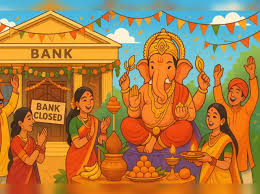Importance of Ganesh Chaturthi Holiday in Indian Culture

Introduction
Ganesh Chaturthi, also known as Vinayaka Chaturthi, is one of the most celebrated festivals in India, dedicated to the worship of Lord Ganesha, the remover of obstacles and the god of beginnings. This grand festival is marked by vibrant celebrations, artistic displays, and communal festivities. As families and communities come together to celebrate during this holiday, Ganesh Chaturthi plays a crucial role in promoting cultural unity and showcasing India’s rich traditions.
Historical Significance
The origins of Ganesh Chaturthi can be traced back to the 19th century when freedom fighter Lokmanya Tilak transformed the festival from a private celebration into a grand public event to unify the people against British colonial rule. This move led to the revival of Hindu culture and rituals, further embedding Ganesh Chaturthi into the socio-political fabric of India.
Celebration with Tradition
The festival typically falls in August or September, depending on the lunar calendar, and lasts for ten to eleven days. Devotees bring home decorated idols of Lord Ganesha and prepare for a series of rituals including ‘puja’ (worship), offering sweets like ‘modak’, singing devotional songs, and community prayers. In major cities such as Mumbai, elaborate processions take place, showcasing gigantic idols of Ganesha being carried to the sea for immersion, symbolizing the cycle of life and nature.
Public Holiday Observance
Ganesh Chaturthi is a public holiday in several states across India. This year, the festival will be observed on September 19, 2023. Schools, government offices, and many businesses will remain closed, allowing individuals and families to immerse themselves in the festivities. The holiday fosters participation at local levels, encouraging a sense of belonging and community spirit among citizens.
The Current Year’s Forecast
In 2023, due to increasing environmental awareness, many communities are adopting eco-friendly practices during caste celebrations, such as using clay idols instead of plastic ones and opting for natural colors for decorations. There is also a growing trend towards digital celebrations, with virtual offerings and prayers gaining popularity, especially in urban areas affected by the pandemic. These shifts indicate an evolving festival that embraces both tradition and modernity.
Conclusion
Ganesh Chaturthi holds immense cultural significance in India, promoting not only religious devotion but also social solidarity. As celebrations continue to evolve, they reflect a society that values its traditions while adapting to contemporary challenges. For readers, participating in such festivals offers a glimpse into India’s diverse culture and helps foster connections that can last a lifetime.









